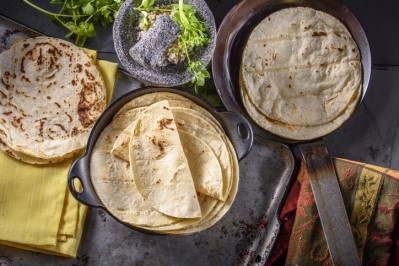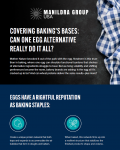IFT FIRST
IFT FIRST preview: Kemin’s new InnoBLQ cuts fat, costs of battered, breaded foods

InnoBLQ is a clean label, functional protein that is topically applied to battered and breaded foods before they are fried to create a microbarrier that blocks between 25% and 50% of oil uptake but also maintains the crispy, crunchy fried flavor and texture consumers expect, Brenda Zavala-Livengood, senior marketing specialist at Kemin, told FoodNavigator-USA.
It also improves adhesion, moisture retention and the nutritional profile of the final product – making it more appealing to consumers who want better-for-you options but don’t want to trade-down on flavor, texture or the overall eating experience, she said.
By reducing oil use and waste associated with excess breading currently lost in the production process, InnoBLQ also promises to help manufacturers cut costs – a top priority for many companies in today’s economic climate as consumer patience with price increases wears thin, Zavala-Livengood added. She also noted that by preserving moisture, companies will deliver higher yields and may forgo other fillers previously used to compensate for the weight difference in the final product.
Acutely aware of mounting consumer concerns about unfamiliar and long lists of ingredients, Kemin offers several versions of InnoBLQ to match the multiple base proteins or for plant-based and seafood options Kemin offers a lentil, pea-protein blend that delivers functional benefits without triggering an allergen statement.
“There is really limited labeling impacts” by matching the based protein in InnoBLQ with its application because “chicken” or “beef” are already listed on the deck, explained Zavala-Livengood.
InnoBLQ builds on Kemin’s Proteus line with shared technology
InnoBLQ builds on the debut of Kemin’s Proteus at last year’s IFT First by leveraging similar technology but allowing for additional functional benefits, Zavala-Livengood explained.
Like InnoBLQ, Proteus is a functional protein that acts as a micro-barrier to preserve moisture retention – increasing hold times under heat lamps or in reheating in foodservice, helping to reduce food waste and reinforce companies’ sustainability goals, Kemin marketing director Courtney Schwartz explained.
She described the technologies as “brothers” but added the InnoBLQ is more limited in variety than Proteus, which is cut and species specific.
Still, she stressed, the SKUs of both lines are based on customer need and desire and the company will work closely with manufacturers to select the best ingredients for the best outcomes.
At Kemin’s IFT First booth #S2410, attendees can learn more about both InnoBLQ and Proteus as well as the company’s full line-up of solutions to improve texture, increase yield and extend product shelf life while maintaining a clean label.





















